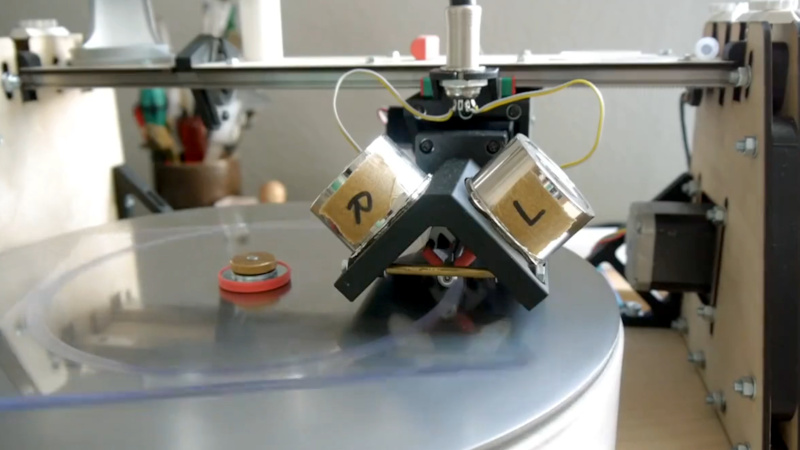It’s no secret that here at Hackaday we’ve at times been tempted to poke fun at the world of audiophiles, a place where engineering sometimes takes second place to outright silliness. But when a high quality audio project comes along that brings some serious engineering to the table we’re all there for it, so when we saw [Slyka] had published the files for their open source record lathe, we knew it had to be time to bring it to you.
Truth be told we’ve been following this project for quite a while as they present tantalizing glimpses of it on social media, so while as they observe, documentation is hard, it should still be enough for anyone willing to try cutting their own recordings to get started. There’s the lathe itself, the controller, the software, and a tool for mapping EQ curves. It cuts in polycarbonate, though sadly there doesn’t seem to be a sound sample online for us to judge.
If you’re hungry for more this certainly isn’t the first record lathe we’ve brought you, and meanwhile we’ve gone a little deeper into the mystique surrounding vinyl.
















Is it me or is the website hosting this project a bit obscure? Regarding the project/concept, cool very cool and although the basics are pretty straight forward, there are so many things you can do wrong this project isn’t as easy as some people make it look. Like to see hear more of it / about it. Please keep us posted.
SourceHut is just a really good github alternative that you can selfhost if you desire (I’m locked in with Gitea myself unfortunately)
Why unfortunately? I love gitea, and imo the repo structure makes it easy to just rip the files out, or sync them to another provider. Even the GitHub actions implementation is reasonably portable; I run the same actions yml files locally and on GitHub.
That’s what I’m thinking. There are some files available but no assembly instructions, no “general” concept or not even sound samples.
I don’t know what’s the point. Does the author think someone would actually build one from that information?
I found his website here but it doesn’t really provide any more info either: https://slyka.net/projects/record-lathe/
FWIW, as much as I enjoy poking (harshly some time) fun at the audiophools who pay £300 for a fuse or some other piece of fairy dust sprinkled woo, I absolutely admire the real engineering of high end audio systems and this project is pretty incredible.
Interesting project, and at least the one CAD file I looked at was really elegantly done with a reasonable quantity of labels on the parts! So source really available and actually really workable should you get involved and want to make changes unlike some ‘open source’ that just provides the model mesh.
Video of this project: https://www.youtube.com/watch?v=zuAH8QUTufg
You’ve been listening to CD’s wrong all this time.
Interesting, My grandfather had the basic ‘Recorhio’ machine… you had to use a small brush by hand to keep the shavings from building up under the cutting head… The deluxe version had a small nozzhole on a tube to blow the cuttings away..
In the video I didn’t see any cuttings show up…weird.
When the cutting ends and the arm takes off the disc, you can see very fine shavings stuck to the stylus. It seems like the pressure is very light and cutting very shallow, so very little shavings produced (which also explain the relatively low quality sound when played back). It’s possible also that polycarbonate cutting produces something more like powder than shavings.
the platter is driven by a stepper motor? I guess there could be a worse option like a 2 cycle chain saw engine.
It seems to me that you can here the motor sound when the disc is played back and the end with silence is reached.